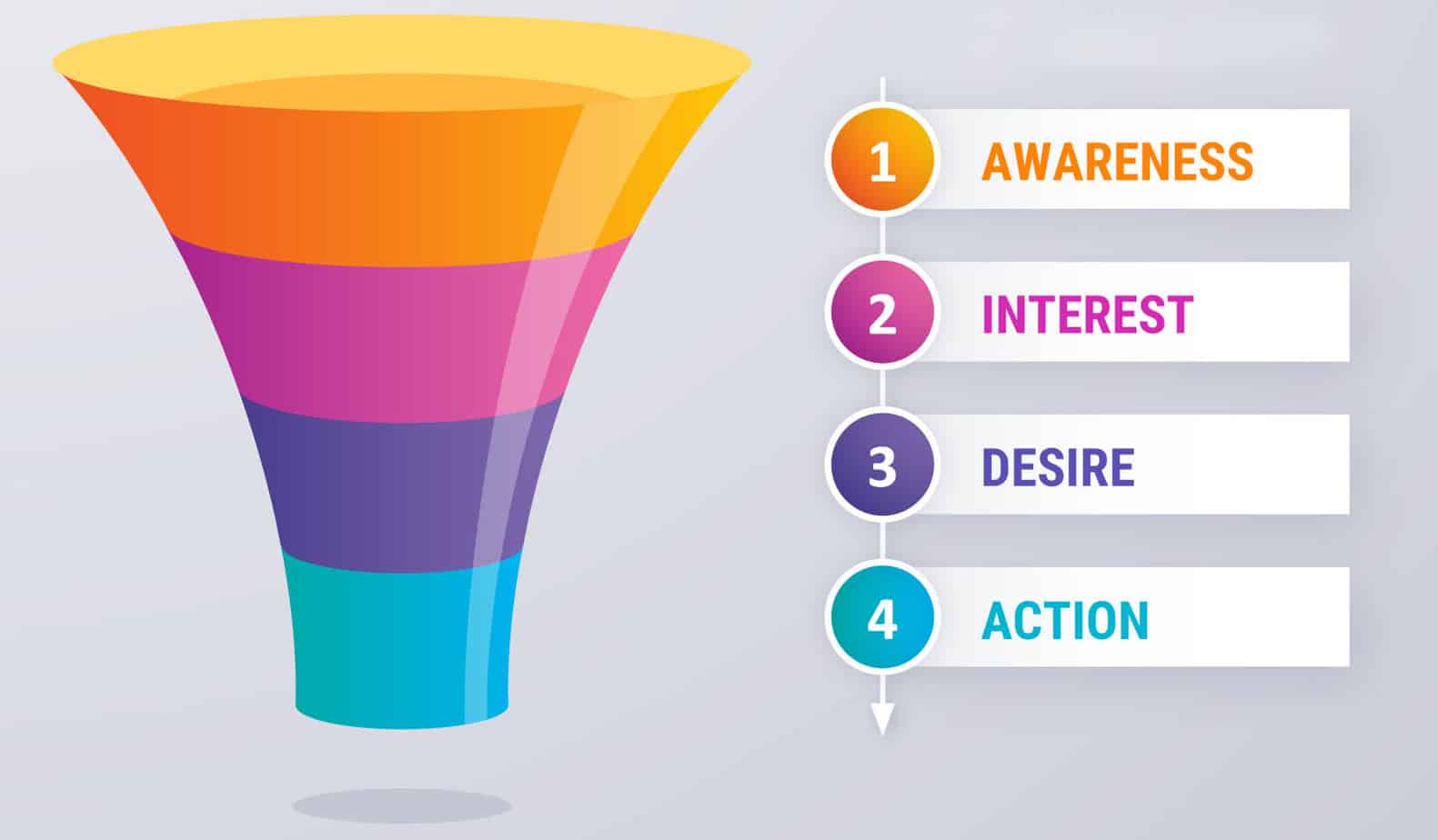Hello!
As a business owner, you know that generating leads is essential to growing your company. But what happens after you’ve acquired those leads? How do you convert them into customers?
 Enter MoFu marketing or middle of the funnel marketing.
Enter MoFu marketing or middle of the funnel marketing.
This guide will show you everything you need to know about MoFu marketing, from how to create content that engages your prospects to strategies for driving conversions.
By the end, you’ll have the knowledge and tools to take your MoFu marketing game up a notch (or three). So let’s dive in!
What is MoFu Marketing?
MoFu marketing is cultivating relationships with potential customers and turning them into paying customers. Specifically, it focuses on strategies that lead prospects from the discovery stage to the conversion stage. The marketing funnel consists of three stages: ToFu, MoFu, and BoFu.
When mid funnel content and strategies are implemented properly, it can help move leads further down the funnel and convert them into customers. As the sales funnel progress to the mid stage, content is focused on building relationships and providing value. The mid-funnel leads are more likely to convert as they are familiar with the brand and better understand what it can offer.
What is the Top, Middle, and Bottom of the Funnel Content?
 Usually, content is distributed into three buckets: Top of the Funnel (ToFu), Middle of the Funnel (MoFu), and Bottom of the Funnel (BoFu).
Usually, content is distributed into three buckets: Top of the Funnel (ToFu), Middle of the Funnel (MoFu), and Bottom of the Funnel (BoFu).
Top of funnel content is designed to capture attention and generate leads. It should provide enough information about your product or service for prospects to be interested in learning more. Content for this part of the funnel should be highly informative yet easy to digest.
Suppose you want to attract a new audience and introduce them to your product. In this case, ToFu content can be blog posts, whitepapers, or even industry reports.
Even if these resources don’t convert leads directly, they can still be useful in SEO, driving traffic, and building trust with potential customers.
Middle of funnel content is designed to nurture the lead and guide them through the purchase process. At this stage, customers have already expressed interest in your product or service and are likely considering other options. Here, MoFu content should provide enough detail about your product or service to help the customer make an informed decision. Examples of content for this stage include case studies and demonstrations that explain how your product works, testimonials from existing customers, webinars, and eBooks.
Finally, the bottom of funnel content is designed to convert leads and generate sales. This content should address any lingering questions or doubts a potential customer may have to convince them to purchase your product or service. Videos featuring short demos, free trials, and detailed product guides are all great examples of BoFu content that can be used to close the sale.
Or, when creating content to promote your product or service, focus on the benefits it offers, such as saving time, money, or resources. The marketing funnel stages are all important, but MoFu content plays a key role in the success of your lead generation and conversion efforts.
What Are the Components of a Successful MoFu Marketing Strategy?
 Before we dive into the details, let’s start by understanding the components of a successful MoFu marketing strategy.
Before we dive into the details, let’s start by understanding the components of a successful MoFu marketing strategy.
Content
Content is the key to engaging your audience and creating an effective MoFu experience. Creating content that is both informative and interesting can help to drive conversions. Content should also be tailored to the target audience and provide value.
Social Media
Social media is one of the most powerful tools for marketers to reach and engage their audiences. Creating content that resonates with the target audience and strategically using social media platforms can help to promote your brand, build relationships, and generate leads.
Advertising
 Advertising is an effective way to reach out to potential customers and drive conversions. Utilizing ad networks such as Google Ads, Facebook Ads, and Twitter Ads can be a great way to get your message across to the right people at the right time. As it create brand advocates, advertising should be integrated into your MoFu strategy.
Advertising is an effective way to reach out to potential customers and drive conversions. Utilizing ad networks such as Google Ads, Facebook Ads, and Twitter Ads can be a great way to get your message across to the right people at the right time. As it create brand advocates, advertising should be integrated into your MoFu strategy.
Analytics
Analytics is essential for tracking and understanding user behavior on your website or app.
By analyzing data such as page views, bounce rates, and time-on-site metrics, you can gain valuable insights into what works (and doesn’t work) for engaging your audience. This will allow you to make strategic decisions that can help to improve your marketing efforts.
Testing
Testing is a great way to measure the effectiveness of different tactics and strategies. A/B, usability, and multivariate testing are excellent methods to determine what works best for driving conversions. The sales team can also be a valuable resource for testing, as they can provide valuable feedback on the customer experience.
 With these components in place, you can start building an effective MoFu marketing strategy! The mid funnel marketing tactics you employ should be tailored to your business’s unique needs and objectives. With careful planning, creative content, and strategic execution, you can successfully engage and convert your target audience.
With these components in place, you can start building an effective MoFu marketing strategy! The mid funnel marketing tactics you employ should be tailored to your business’s unique needs and objectives. With careful planning, creative content, and strategic execution, you can successfully engage and convert your target audience.
What Are the Benefits of MoFu Marketing?
When it comes to MoFu marketing, numerous benefits can be gained.
Improve customer loyalty and build relationships
Unlike other marketing techniques, MoFu marketing allows brands to build strong customer relationships by providing them with informative content and resources. By engaging in conversations with customers, brands can demonstrate their commitment to providing quality service and create a more loyal customer base.
Increase website traffic and engagement
 Middle of the funnel marketing allows brands to reach more people, increasing website traffic and engagement. Through thoughtful content and engaging conversations with customers, brands can ensure that the right audience hears their message.
Middle of the funnel marketing allows brands to reach more people, increasing website traffic and engagement. Through thoughtful content and engaging conversations with customers, brands can ensure that the right audience hears their message.
When in the middle of funnel marketing, brands can also track and measure results, allowing them to adjust their campaigns accordingly.
Generate qualified leads
MoFu strategies allow marketers to create content that reaches their target audience and offers them valuable insights into their product or service. By providing helpful information and resources, brands can encourage prospects to take action by converting them into qualified leads. As the middle of funnel content focuses on customer relations, brands can build trust and credibility with their audience.
Increase conversion rate
Because MoFu marketing is focused on building relationships and providing customers with helpful content, brands can increase the likelihood of conversion. With engaging content and a strong relationship with customers, brands can increase their conversion rate and make sure that they generate leads that can be converted into sales. The content and social media marketing elements of MoFu strategies can also ensure that customers are aware of the brand and its offerings.
Achieve better ROI
 MoFu marketing strategies allow brands to reach out to their target audience, track their progress and adjust strategies accordingly. This allows them to ensure that their marketing budget is used effectively and efficiently, resulting in a better return on investment.
MoFu marketing strategies allow brands to reach out to their target audience, track their progress and adjust strategies accordingly. This allows them to ensure that their marketing budget is used effectively and efficiently, resulting in a better return on investment.
MoFu Marketing Ideas
Now that you have identified the mid-funnel target audience and their needs, it’s time to create content and activities to reach them. Below are some examples of mid-funnel activities that can help you engage with potential customers and move them further down the funnel:
(In-depth) Webinars
Webinars are a great way to reach potential customers who may still need to be ready to purchase. You can create an intimate connection with potential customers by providing educational content and the opportunity to interact with a representative of your company.
The customer success stories and Q&A sessions can address customer pain points and demonstrate how your product or service can provide solutions. When your marketing strategy includes webinars, you can also use them for lead generation and nurturing existing relationships.
 In-depth webinars can be used to target potential customers who are ready to move further down the funnel. These webinars provide a more detailed look at how your product or service can solve customer problems, and they also give you a chance to collect leads and nurture relationships with existing clients.
In-depth webinars can be used to target potential customers who are ready to move further down the funnel. These webinars provide a more detailed look at how your product or service can solve customer problems, and they also give you a chance to collect leads and nurture relationships with existing clients.
Case Studies
Case studies provide potential customers with more information about your product or service and demonstrate how it has solved customer problems. By showing potential customers the results that have already been achieved, you can demonstrate the value of your product or service.
Retargeting Ads
Retargeting ads are one of the most effective ways to nurture existing relationships and convert potential customers. These ads are triggered when a user visits your site or interacts with a piece of content. The ads are tailored specifically to those users so that you can create relevant and engaging content for each segment of your target audience.
Customer interview
 Customer interviews are essential for understanding how your product or service can meet customer needs.
Customer interviews are essential for understanding how your product or service can meet customer needs.
By asking customers about their journey and the challenges they face, you can collect valuable data that can be used to identify potential solutions. These conversations also give you an in-depth look at how potential customers perceive your company.
Product review
Product reviews provide potential customers with a look at how real customers view your product or service. They can be used as an effective way to demonstrate the value of your product or service and set realistic expectations for what it can do. Usually, what makes a review effective is its honesty and transparency. There should be no sugarcoating. The reviews should give potential customers an honest assessment of the product or service.
Expert guide
Experts in your industry can provide valuable insight into potential customers’ challenges. Offering an expert guide to your target audience can be a great way to demonstrate knowledge and build trust with potential customers. This type of content also provides more detailed information on topics related to your product or service, which can help move people further down the funnel.
Solution comparison
Sometimes potential customers need to compare solutions before they decide which one is the best fit for them. With solution comparison content, you can use data-driven insights to give customers the information they need to make an informed decision. This content also provides a great opportunity to showcase your product or service compared to competitors.
 Remember the following when creating solution comparison content:
Remember the following when creating solution comparison content:
- Focus on the benefits that you offer that other solutions do not.
- Include real-world customer stories and feedback to show how your solution solved a problem.
- Take the time to explain any technical details in an easy-to-understand way.
- Be sure to include any pricing information or special deals you offer.
In-depth podcast
Podcasts effectively reach potential customers and provide a more in-depth look at your product or service. This type of content can be used to educate potential customers about the value of your product or service, as well as to discuss topics related to the industry. Like you would start with webinars, you can also use podcasts for lead generation and nurturing existing relationships.
Live chat
Live chat is a great way to connect with potential customers in real time. You can demonstrate your commitment to customer service and build trust with potential customers by providing quick responses to their questions or concerns. Live chat can also be used to direct customers to specific pieces of content that are most relevant to them.
In-depth courses
 In-depth courses can provide potential customers with a comprehensive look at how your product or service works. These courses are great for providing detailed information and demonstrating the value of your product or service in an easily digestible way. They also allow you to nurture existing relationships by giving current customers access to additional content related to their product usage.
In-depth courses can provide potential customers with a comprehensive look at how your product or service works. These courses are great for providing detailed information and demonstrating the value of your product or service in an easily digestible way. They also allow you to nurture existing relationships by giving current customers access to additional content related to their product usage.
By leveraging these mid funnel tactics, you can reach potential customers at different points in their journey and provide them with the most relevant content. This will help create a more engaging customer experience and move potential customers further down the funnel.
Through mid-funnel marketing, companies can build trust with potential customers, educate them on their products or services, and ultimately convert them into customers.
Also read:
- Is Your Business Hybrid-Ready?
- How to Challenge Your Brain to Learn Easily
- Best Job Oriented Courses After Graduation
Closing Thoughts About Mid Funnel Marketing
 Mid funnel marketing (MoFu) should be integral to any successful digital marketing strategy. With the right approach, MoFu can nurture leads into loyal customers and convert them into long-term advocates for your brand.
Mid funnel marketing (MoFu) should be integral to any successful digital marketing strategy. With the right approach, MoFu can nurture leads into loyal customers and convert them into long-term advocates for your brand.
By leveraging key insights from customer behavior and preferences, brands can create compelling content and campaigns that will drive conversions and increase customer loyalty.
So, at last, when it comes to mid funnel marketing, it is important to understand the customer journey, identify key opportunities and develop an effective strategy that will help you nurture and convert leads into loyal customers.
We hope this guide has helped you understand mid funnel marketing and how it can be used to help achieve your business goals. If you have any questions or need help getting started, please contact us directly; we will be happy to assist.
Thank you!
Join us on social media!
See you!






